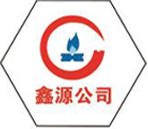
Dec . 12, 2024 23:49
Back to list
gas pressure reducer
Understanding Gas Pressure Reducers Functionality and Importance
Gas pressure reducers are essential devices that play a critical role in the management and regulation of gas pressure in various industrial and domestic applications. These devices ensure that gases are delivered at a constant pressure, making them safe and efficient for use in various systems, including heating, cooking, and industrial processes. In this article, we will explore the functionality, types, applications, and importance of gas pressure reducers in different sectors.
What is a Gas Pressure Reducer?
A gas pressure reducer, also known as a pressure regulator, is a device designed to decrease the pressure of gas from a high-pressure source to a lower, usable pressure. This device is crucial for maintaining a consistent pressure level that is optimal for equipment and processes, preventing potential damage or hazards that could arise from excessive pressure.
How Does a Gas Pressure Reducer Work?
The core function of a gas pressure reducer involves the principle of controlling the flow of gas. The device typically utilizes a diaphragm and a spring mechanism. When high-pressure gas enters the reducer, it exerts force on the diaphragm. As the diaphragm moves against the tension of the spring, it opens an orifice that allows gas to escape at a reduced pressure. The effectiveness of the gas pressure reducer is illustrated in its ability to adjust dynamically. Even if the supply pressure fluctuates, the reducer maintains a steady output pressure as long as it remains within its specified range.
Types of Gas Pressure Reducers
There are several types of gas pressure reducers, each designed for specific applications
1. Single-Stage Regulators These are used in applications where the input pressure does not vary significantly. They take high-pressure gas and reduce it to a lower, more manageable pressure in one step.
2. Two-Stage Regulators These are designed for situations where high variability in input pressure is expected. They provide a more stable output pressure by first reducing the pressure halfway in the first stage and then fine-tuning it in the second stage.
3. High-Pressure Regulators These are specifically designed to handle high-pressure gas supplies. They are commonly used in industrial settings where gases are stored at elevated pressures.
gas pressure reducer

4. Low-Pressure Regulators These are typically used in domestic applications where lower gas pressures are required, such as in natural gas heating systems.
Applications of Gas Pressure Reducers
Gas pressure reducers are widely utilized across various sectors
- Residential Applications In homes, gas pressure reducers ensure that the gas supplied for heating, cooking, and hot water systems is maintained at safe and efficient pressure levels.
- Industrial Applications Industries that utilize gases for manufacturing processes, welding, or chemical applications rely on pressure reducers to maintain safe operating conditions and to protect sensitive equipment from pressure fluctuations.
- Medical Applications In the medical field, gas pressure reducers are crucial in anesthesia and gas delivery systems, ensuring that patients receive the correct dosage of gases without risks associated with pressure changes.
- Automotive Applications In vehicles, gas pressure reducers are used in systems that require controlled fuel delivery, such as in gas-powered engines, to optimize performance and emissions.
Importance of Gas Pressure Reducers
The significance of gas pressure reducers cannot be overstated. By regulating gas pressure, these devices enhance safety by preventing potential hazards such as explosions or equipment failures due to excessive pressure. Furthermore, they improve efficiency by ensuring that gas is utilized effectively, reducing waste and lowering operational costs. In industries where precision is critical, such as pharmaceuticals and food processing, gas pressure reducers are essential for maintaining quality control standards.
Conclusion
In summary, gas pressure reducers are vital components in the management of gas pressure across various applications. Their ability to provide consistent and safe pressure levels underscores their importance in both residential and industrial settings. As technology continues to advance, the design and functionality of these devices will likely evolve, offering even greater safety and efficiency in gas management. Understanding and implementing proper gas pressure reduction systems can lead to safer and more efficient operations, making it a crucial aspect of modern technology and industry.
Next:
Latest news
-
Safety Valve Spring-Loaded Design Overpressure ProtectionNewsJul.25,2025
-
Precision Voltage Regulator AC5 Accuracy Grade PerformanceNewsJul.25,2025
-
Natural Gas Pressure Regulating Skid Industrial Pipeline ApplicationsNewsJul.25,2025
-
Natural Gas Filter Stainless Steel Mesh Element DesignNewsJul.25,2025
-
Gas Pressure Regulator Valve Direct-Acting Spring-Loaded DesignNewsJul.25,2025
-
Decompression Equipment Multi-Stage Heat Exchange System DesignNewsJul.25,2025

